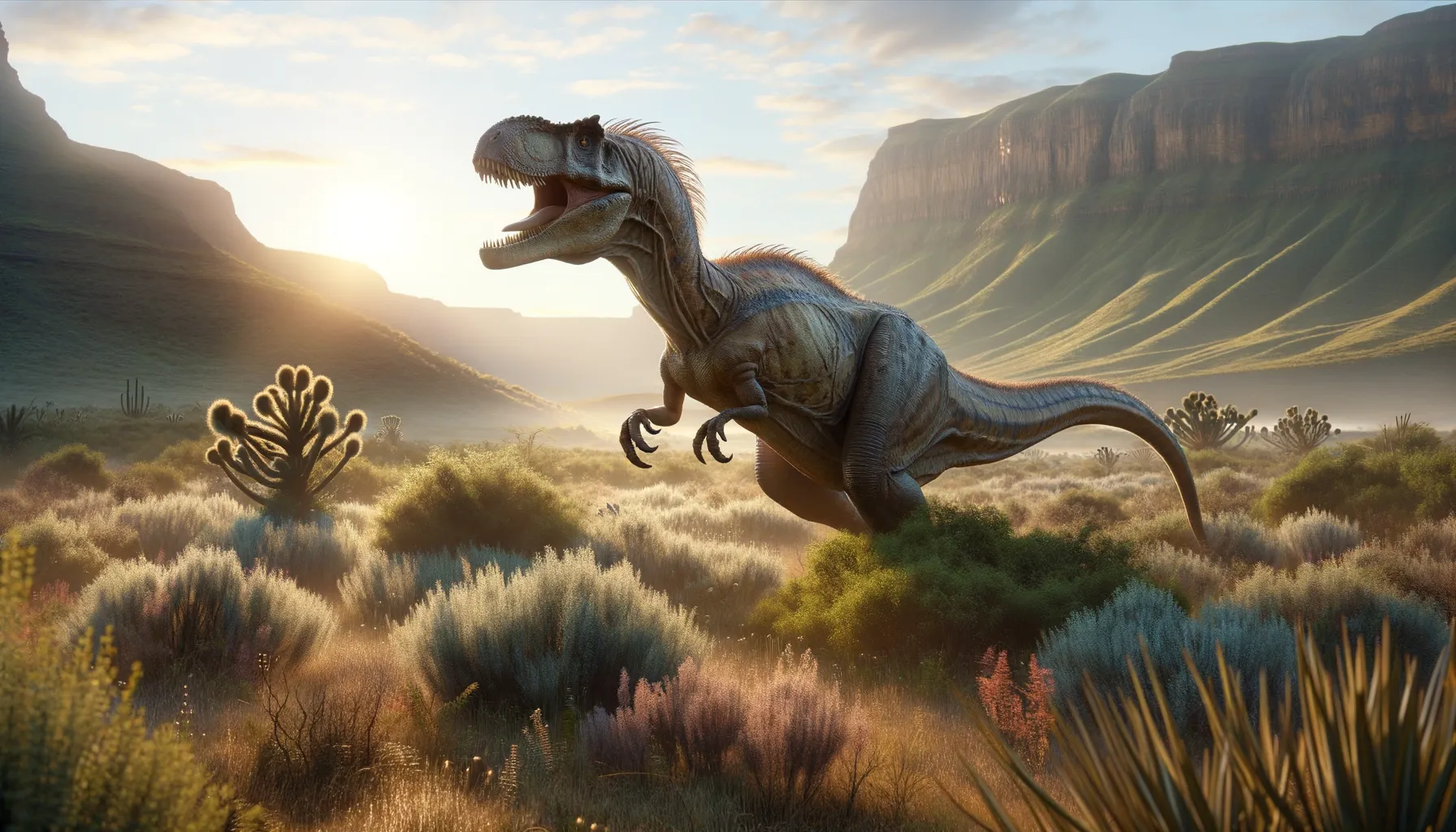
Gryponyx
Agile herbivore of the Jurassic world.
Period
Jurassic
Length
Around 3.5 meters from head to tail.
Height
Approximately 1.5 meters tall at the hip.
Weight
Roughly 100 to 150 kilograms.
Gryponyx was a bipedal dinosaur that lived during the Jurassic period, known for its strong hind limbs and agile movement. Originating in what is now South Africa, this dinosaur played a significant role in the ecosystem as a herbivore, likely feeding on low-lying vegetation. Its name means 'hooked claw', attributed to the shape of its manual unguals, which were possibly used for foraging or defense.
Diet
Gryponyx was primarily herbivorous, feeding mainly on ferns and cycads. Its teeth were adapted to deal with tough plant material, suggesting a diet of low-lying vegetation.
Hunting
As a herbivore, Gryponyx did not actively hunt. Instead, it foraged for plant materials, using its beak-like mouth to clip vegetation efficiently. Its hooked claws may have aided in pulling branches closer.
Environmental challenges
Gryponyx faced numerous environmental challenges, including fluctuating climates and changing vegetation patterns. These shifts in habitat required adaptability to acquire food sources. Additionally, it had to avoid larger carnivorous predators that roamed the Jurassic landscape. The scarcity of water in certain periods also affected its survival and reproductive success.
Speed
Moderate, capable of swift bipedal bursts.
Lifespan
Estimated to be around 20-30 years.
First discovery
First discovered in South Africa in the early 20th century.
Fun Facts
- Gryponyx was a dinosaur that lived during the Late Triassic period, around 220 million years ago.
- Its name 'Gryponyx' means 'hooked claw' in Greek, referring to its distinctive curved claws.
- Gryponyx was a herbivore, which means it mainly fed on plants and leaves.
- It was not a very large dinosaur, with an estimated length of about 3 meters or roughly 10 feet.
- Gryponyx is known from fossils discovered in South Africa, giving scientists clues about its habitat and lifestyle.
- The dinosaur is part of the larger group called prosauropods, which are considered early relatives of the giant sauropods.
- Although not much is known, Gryponyx likely walked on two legs, similar to a kangaroo hop when moving quickly.
Growth and Development
Gryponyx likely underwent rapid growth in its early years to reach a size large enough to deter predators. Juveniles may have formed groups for protection while feeding. As they matured, growth rates likely slowed, with individuals reaching sexual maturity within a few years.
Habitat
The Gryponyx thrived in regions that were lush with vegetation but also experienced dry spells. It lived in areas that ranged from forested landscapes to open plains, offering a variety of plant life. Seasonal changes and volcanic activity played significant roles in shaping its habitat, influencing migration patterns.
Interaction with other species
Gryponyx coexisted with a variety of other dinosaur species, both herbivorous and carnivorous. Its interactions were mostly neutral or defensive, relying on its speed and agility to escape predators. It likely had symbiotic relationships with smaller herbivores, which shared feeding grounds.
Natural lifespan
Gryponyx is believed to have lived naturally for about 20-30 years.
Reproduction
Gryponyx likely reproduced by laying eggs in nests constructed on the ground. Females may have laid clutches of several eggs at a time, which were then covered with foliage for camouflage. Parental care after hatching was probably minimal, with young left to fend for themselves.
Social behaviour
Gryponyx may have traveled in small herds, providing safety in numbers against predators. Social structures were likely simple, with loose group dynamics centered around feeding. While not entirely solitary, interactions between individuals were primarily for reproduction or during migration.
Fossil locations
Fossils of Gryponyx have been predominantly found in South Africa. These discoveries have provided significant insight into the dinosaur's anatomy and lifestyle. The sites of these fossils are often in sedimentary rocks that were once ancient riverbeds or floodplains.
